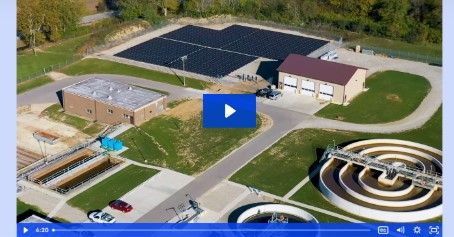Originally published in the July/August 2016 issue of FMJ — The ocean has been described as poetry in motion. Like the sea, rhythm in poems is a pattern of recurrence — something that happens with regularity. The gentle swell of the waves can be likened to the easy, spontaneous grace of Elizabethan lyrics. The ocean can be violent like the tempestuous darkness of Shakespeare, serene like the verse of William Butler Yeats or as persistent as the persuasive undercurrent of proletarian poetry. Poetry uses the ethereal power of words to generate emotion. The ocean has a more mundane power that can be used to generate energy.
If Alfred Lloyd Noyes had written “The Sailor” instead of “The Highwayman” and focused on the inexorable power of the sea instead of undying love, he might have started thus:
The sun is an endless presence,
traversing across the sky
The moon is its faithful shadow,
eternally nearby
Islands rise and islands fall,
echoes of volcanic roar
And the oceans keep on crashing —
Crashing — crashing —
The oceans keep on crashing,
onto the waiting shore
As discussions about energy and the reliance on fossil fuels to generate the power needed to run industry and transportation continue, renewable energy sources are being brought up more and more as efficient and available alternatives to existing practices. Solar, wind and hydroelectric power seem to garner most of the attention as the most accessible.
An area that has received short shrift to date is hydrokinetic energy; that which can be captured from the flowing water that occurs in ocean currents. Hydrokinetic energy resource potential is significant, particularly for wave energy, and it is a renewable resource which does not produce greenhouse gas emissions.
The International Energy Agency estimates that nearly half of the electricity needed to supply global demand will have to be derived from renewable energy sources by the year 2050. This would enable carbon dioxide emissions to be halved by then. This is the only way that significant and irreversible climate change impacts can be reduced.
Experts predict a 35 percent increase in demand for electricity by 2030. In practical terms that means an equivalent increase in demand of fossil fuels. However, fossil fuels contribute greatly to greenhouse gas emissions and are not renewable; and as demand grows, supplies are depleted exponentially. Coal and oil cannot be viewed as long-term solutions to energy needs, but the world has not yet fully embraced any or all renewable resources.
The development of marine energy needs to expand in coming years. It is believed that ocean energy technologies could start playing a sizeable role in the global electricity mix by the year 2030. As an example of the resources available to provide energy, the total power of waves breaking on the world’s coastline is estimated to be 2 to 3 million megawatts. An average 4-foot, 10-second wave striking land puts out more than 35,000 horsepower, which converts to a wave energy density of about 65 megawatts per mile of shoreline.
Globally, ocean energies represent only about 1 percent of energy production from renewable sources. Technologies to exploit tidal range power are the most prominent to have reached commercialization stages. These involve high investment costs and some environmental impacts.
The La Rance Tidal Power Plant was commissioned in 1966 in France as the world’s first tidal power station. For 45 years it was the largest tidal power station in the world by installed capacity at 240 megawatts. The South Korean Sihwa Lake Tidal Power Station surpassed it in 2011. This type of installation has remained relatively unique in the world, but is even now being reproduced at more limited capacities in countries such as Canada, China and Russia.
There are also further developments pending as several projects are being implemented in the United Kingdom. The European Ocean Energy Association estimates ocean power has the potential to generate 188 gigawatts by 2050 through the concerted efforts on the continent. This could satisfy 15 percent of electricity demand in Europe and, in some countries, up to 20 percent of national demand.
Generating technologies for deriving electrical power from the ocean include tidal power, wave power, ocean thermal energy conversion (OTEC), ocean currents, ocean winds and salinity gradients. Of these, the three most well-developed technologies are tidal power, wave power and ocean thermal energy conversion. Tidal power requires large tidal differences. OTEC is limited to tropical regions. Wave energy has a more general application, with potential along the coastlines.
A deeper dive
Tidal power or tidal energy is the only technology that draws on energy inherent in the orbital characteristics of the Earth-Moon system, and to a lesser extent in the Earth-Sun system. Tidal energy has been used since about the 11th century, when small dams were built along ocean estuaries and small streams. The tidal water behind these dams was used to turn water wheels to mill grains.
In order for tidal energy to work well, relatively large increases in tides are necessary; generally, this means an increase of at least 16 feet between low to high tide. The energy of tides is highly predictable but also highly localized, and the most suitable sites are those where ocean currents are exceptionally strong.
There are only a few places where this tide change occurs around the Earth, and some power plants are already operating based on this premise. For example, the Bay of Fundy in Canada has deployed a tidal stream turbine to take advantage of its dramatic tides. Turbines like this are utilized to convert the kinetic energy of ocean and tidal currents into electricity.
Wave power offers a large source of energy that can be transformed into electricity by a wave energy converter. Wave power is distinct from the diurnal flux of tidal power and the steady gyre of ocean currents. It is an irregular and oscillating low-frequency energy source that must be converted to a 60-Hertz frequency before it can be added to the electric utility grid. There are several processes available for converting wave energy, utilizing either fixed onshore devices or mobile devices at sea.
Wave energy conversion takes advantage of the ocean waves caused primarily by interaction of winds with the ocean surface. The energy in the waves comes from the movement of the ocean and the changing heights and speed of the swells. The kinetic energy — energy of motion — in waves is tremendous. Power is produced through electricity generators that are placed on the surface of the ocean. Energy output is determined by wave height, wave speed, wave length and water density.
As far back as the mid-1990s, there were more than 12 generic types of wave energy systems. Some systems extract energy from surface waves. Others extract energy from pressure fluctuations below the water surface or from the full wave. Some systems are fixed in position and let waves pass by them, while others follow the waves and move with them. Some systems concentrate and focus waves, which increases their height and their potential for conversion to electrical energy.
Although many wave energy devices have been invented, only a small proportion have been tested and evaluated. Furthermore, only a few have been tested at sea in ocean waves rather than in artificial wave tanks. To date there are only a handful of experimental wave generator plants in operation around the world.
Ocean thermal energy conversion technology relies on a temperature difference of at least 20 degrees Centigrade between warm surface water and cold deep water. This means that tropical waters have the optimal conditions for its deployment. A great amount of thermal energy is stored in the world’s oceans. Each day, the oceans absorb enough heat from the sun to equal the thermal energy contained in 250 billion barrels of oil.
Ocean thermal energy conversion systems convert this thermal energy into electricity. OTEC has the advantage of producing renewable energy on a continuous basis. However, the demands for systems-engineering competencies and enhanced industrial capacities related to the implementation of OTEC has limited the number of entities that can be seriously engaged in its development.
Salinity gradient energy is osmotic technology that utilizes the energy available from the difference in salt concentrations between freshwater and seawater. Such resources are found in large river estuaries and fjords. In the system, a semi-permeable membrane is utilized so that the salt concentrations can be equalized. This increases pressure in the seawater compartment. Improving this system and to enable further development hinges on the characteristics of the membrane, which need further optimization. In current deployments, these membranes generate only a few watts of energy per square meter.
Ocean current technology is still in its early stages of development. However, several tidal and in-stream current turbine applications are near commercialization. These devices take advantage of the daily tidal cycles in ocean environments near the shore, or steady water flow from freshwater rivers.
For ocean current energy to be utilized successfully at a commercial scale, a number of engineering and technical challenges need to be addressed. Equipment must be corrosion resistant due to salt’s effect on metals. Marine growth that attaches to the underwater portions of the structure has the potential to foul up mechanisms, and the operators must avoid bubble formations (cavitation).
Because the logistics of maintenance are likely to be complex and the costs potentially high, system reliability is of particular importance. This technology is truly in its infancy. At present, no open-ocean current turbines are deployed in U.S. water.
Environmental impacts
While wave energy does not produce greenhouse gases or other atmospheric pollutants during electricity generation, emissions do arise from the stages of its construction, transportation and full life cycle. There are also potential impacts associated with the release and leakage of hydraulic fluids, lubricating oils and fluids, and anti-corrosion and biofouling paints and coatings, into the surrounding seas.
Marine mammals may be vulnerable to the floating structures, or the edifices may act as barriers to marine movement and migration, affecting the fauna and flora on the seabed. Most offshore wave energy devices are moored directly to the ocean floor and their mooring lines could pose a threat of entanglement for some marine life, especially larger whales.
As with other energy sources, wave energy has both environmental and economic implications which must be considered when planning a new installation. Many of the environmental problems associated with wave energy are similar to those experienced in offshore wind energy generation installations. The lessons learned from offshore oil production, wind power and other ocean-based industries can provide critical information that can lead to a mitigation of the impact of wave energy on the environment.
Going with the flow
Time and the tide wait for no one. But while time is irretrievably lost, the tide keeps coming back. Although there are costs and challenges to fully taking advantage of ocean power, time is passing by. The milestone years of 2030 and 2050 are looming closer on the horizon. Industry must take a deep breath and dive into the concept of long-term thinking and actions. As Shakespeare may have written in his comedy, “As You Like It:”
Pound, pound thou endless waves
Thou aren’t so pervasive
As man’s hesitancy
There is no disputing the power of poetry. It is timeless, the words resonating from the past into the future without ever losing their impact. Nor can the inestimable potential of energy from the omnipresent ocean be argued. In poetry, the audience is transported by the words, relaxing in the rhythm and feelings it evokes, letting it come to them and enjoying the emotional ride. In the ocean, one is carried by the flow, accepting the reality of its power and majesty.
The wave of the future is here; it always has been. Rife with energy and boundless potential it hammers with insistency at doorsteps around the world. Give a person a wave, and they can surf. Give them the power of the ocean, and there may be no end to the ride. – FMJ






